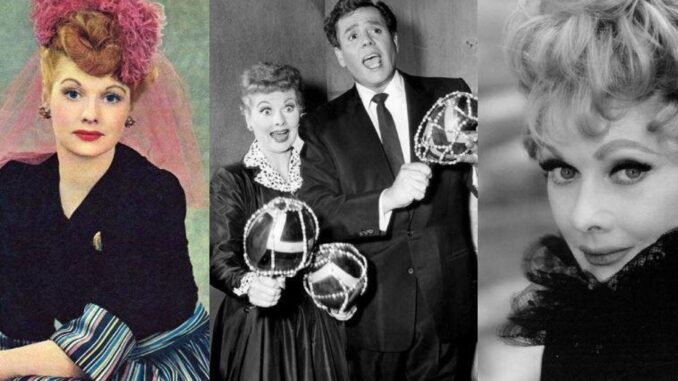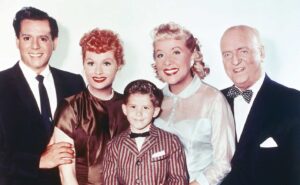
When you think of classic television, it’s hard not to picture Lucy’s mischievous grin or hear Ricky’s iconic “Lucy, you got some ‘splainin’ to do!” I Love Lucy transformed television, cementing its place as one of the most beloved sitcoms of all time. But did you know there’s so much more to the show than its catchy catchphrases and comedic mishaps? Let’s dive into some fascinating facts and little-known secrets about I Love Lucy that will make you see the show in a whole new light.
What Made “I Love Lucy” So Revolutionary?
Created in 1951, I Love Lucy broke ground with its unique approach to comedy and production. It wasn’t just funny; it was innovative. Lucille Ball and Desi Arnaz, a real-life couple, brought authenticity to their on-screen roles as Lucy and Ricky Ricardo. From pioneering filming techniques to pushing social boundaries, here’s why this show still captivates audiences decades later.
The Show Was Filmed in Front of a Live Audience
Ever wonder why I Love Lucy feels so real? It’s because it was filmed live. Each week, Lucille Ball and her co-stars performed in front of a live studio audience, creating authentic reactions that enhanced the show’s humor. In the 1950s, filming with a live audience was a novelty, and I Love Lucy helped set the standard for sitcoms that would follow.
Lucille Ball’s Pregnancy Changed Television Forever

Lucille Ball’s pregnancy became one of the first to be written into a television show, which was groundbreaking at the time. The episode where Lucy tells Ricky she’s pregnant was one of the most-watched episodes in TV history. Networks at the time didn’t even allow the word “pregnant” on air, so they had to use “expecting” instead. This moment not only opened doors for more realistic portrayals on TV but also made I Love Lucy even more relatable.
Desi Arnaz Innovated TV Production with the Multi-Camera Setup
Before I Love Lucy, sitcoms were typically shot with a single camera. Desi Arnaz, however, pushed for a multi-camera setup, which allowed for quicker filming and better comedic timing. By placing multiple cameras around the set, the show could capture different angles simultaneously, enhancing the pacing and energy. Today, the multi-camera format remains a staple in sitcom production.
“I Love Lucy” Helped Invent the Rerun
Ever wonder why you can still catch I Love Lucy episodes today? It’s because I Love Lucy pioneered the concept of reruns. The rerun allowed networks to air previously recorded episodes, providing a fresh income stream and making the show available to new audiences over the years. This innovation transformed television’s business model, shaping how we watch TV to this day.
The Real Story Behind Lucy and Ethel’s Friendship
The on-screen chemistry between Lucy and Ethel is legendary. In reality, Lucille Ball and Vivian Vance had a respectful working relationship but weren’t as close off-screen as fans might hope. Although they were friendly, tensions sometimes arose due to Vivian’s frustration with always playing a sidekick role. Despite their differences, their on-screen friendship is unforgettable.
The Show Faced Controversy for Featuring a Mixed-Race Couple
Lucille Ball, a white actress, and Desi Arnaz, a Cuban-American actor, were one of television’s first interracial couples. The pairing was groundbreaking but faced pushback from network executives who feared it would be controversial. Lucille Ball insisted on casting her real-life husband as Ricky Ricardo, paving the way for more diverse representations on TV.
The Grape-Stomping Scene Wasn’t as Fun as It Looked
One of I Love Lucy’s most famous scenes is the grape-stomping bit from “Lucy’s Italian Movie.” While it looks like Lucy is having a blast, the filming was far from glamorous. Lucille Ball ended up getting bruised during the take, and the scene required multiple takes for the perfect comedic timing. The dedication shows, as this scene remains one of the most iconic moments in TV history.
Lucy and Desi’s Marriage Influenced the Show’s Plot
Lucille and Desi’s real-life marriage deeply influenced the show’s dynamic. While they appeared to be a perfect couple on-screen, off-screen, they dealt with many challenges. Their relationship was full of ups and downs, which sometimes found subtle reflection in their performances, giving their on-screen interactions an added layer of depth.
Lucille Ball Owned the Studio That Made the Show

Desilu Productions, co-owned by Ball and Arnaz, produced I Love Lucy and other popular series. Lucille Ball became one of Hollywood’s first powerful female studio executives when she bought out Desi’s interest in the company. This move not only secured her financial future but also allowed her to influence the industry in unprecedented ways.
The “Chocolate Factory” Episode Was Just as Hectic Behind the Scenes
The “Job Switching” episode, where Lucy and Ethel work at a chocolate factory, is a fan favorite. Surprisingly, the chaos you see on screen wasn’t far from reality! Lucille Ball and Vivian Vance had to handle real chocolates on a conveyor belt, and the sheer mess and frantic pace led to some unplanned, hilarious moments that were left in the final cut.
Iconic Props and Costumes Were Constantly Reused
Budget constraints led the show to reuse many props and costumes. For example, Lucy’s polka-dot dress appeared multiple times throughout the series. This technique, though born out of necessity, added a sense of continuity to the show, making each episode feel connected.
Fans Can Still Visit Some Filming Locations
Though many scenes were shot on soundstages, I Love Lucy featured real locations too. Today, fans can visit places like the iconic Brown Derby restaurant in Hollywood, where Lucy famously got her head stuck in a loving cup. These locations allow fans to relive some of the show’s magic in person.
The Legacy of “I Love Lucy” Lives On
Decades later, I Love Lucy remains a cultural phenomenon. Its impact on television history, production techniques, and social norms set a foundation for countless shows that followed. Lucy and Ricky’s laughter-filled world continues to bring joy, and knowing these behind-the-scenes details only adds to the magic.
Conclusion: Why “I Love Lucy” Is More Than Just a Sitcom
I Love Lucy wasn’t just a show; it was a trailblazer that shaped modern television. From pioneering reruns to breaking racial boundaries, Lucy and Ricky’s world wasn’t just about laughs but about changing how stories were told on TV. Every detail, every laugh, and every lesson behind I Love Lucy remains a testament to its lasting influence on entertainment.
FAQs
1. Why was “I Love Lucy” filmed in black and white?
Filming in black and white was standard in the 1950s due to cost and technology limitations. Color TV was still in its early stages.
2. Did Lucille Ball and Desi Arnaz have children?
Yes, they had two children: Lucie Arnaz and Desi Arnaz Jr., who also grew up in the spotlight.
3. What inspired the character of Lucy Ricardo?
The character was loosely inspired by Lucille Ball’s real-life personality and her desire to showcase her comedic talents.
4. Are there any colorized episodes of “I Love Lucy”?
Yes, some episodes have been colorized over the years for special broadcasts, giving fans a new way to enjoy classic episodes.
5. Is there a museum dedicated to “I Love Lucy”?
Yes, the Lucy-Desi Museum in Jamestown, New York, celebrates the show and Lucille Ball’s legacy with memorabilia and exhibits.
